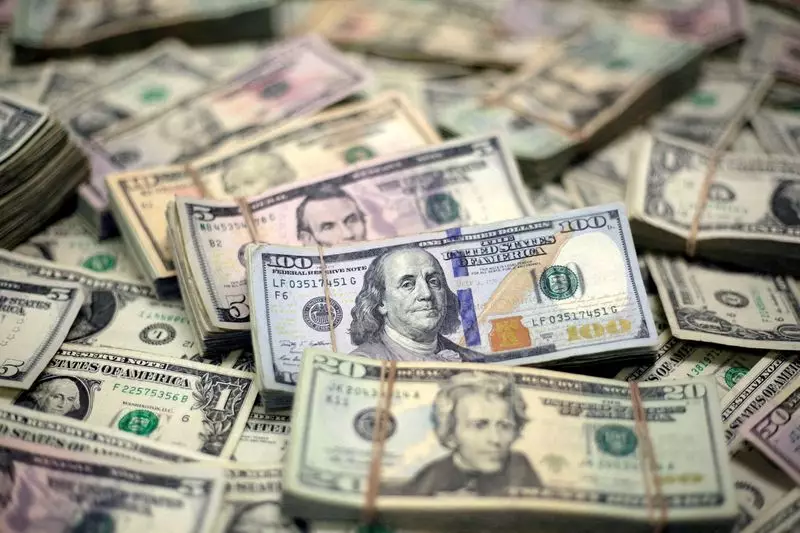As financial markets navigate the intricate landscape shaped by central bank policies and economic data, the U.S. dollar has emerged as a formidable player. Recent trends indicate a notable uptick in the dollar’s value, reaching a two-month high against other major currencies. This shift is primarily fueled by expectations surrounding the Federal Reserve’s potential moves to lower interest rates gradually. As we delve into this unfolding scenario, it is essential to understand the broader implications for global markets and the reactions of other currencies, such as the yen and the euro, which have come under pressure.
The resurgence of the dollar is noteworthy, with the dollar index measuring its performance against six rival currencies reaching 103.18. This figure reflects a substantial recovery from a previous downtrend, with forecasts indicating it may fully reverse losses accrued over the past three months. Traders are currently anticipating that the Federal Reserve will implement a cautious approach to interest rate cuts, with increased market confidence suggesting a significant likelihood of a 25 basis point cut in the upcoming November meeting.
This newfound optimism has been readily supported by positive economic indicators emerging from the U.S. economy. For instance, inflation rates in September were slightly more elevated than projected, prompting traders to reassess their expectations surrounding the Fed’s easing cycle. The market’s perception of a resilient economy—one that is decelerating modestly rather than plummeting—has contributed to bolstered sentiment regarding the dollar’s trajectory.
As the dollar gains strength, the yen’s performance reflects contrasting vulnerabilities. The Japanese currency has increasingly approached the psychologically significant 150 per dollar threshold, primarily influenced by a dovish pivot from the Bank of Japan and emerging concerns about the timing of future monetary tightening. Commentary from high-ranking officials, including new Prime Minister Shigeru Ishiba, suggests a reluctance to pursue aggressive rate hikes, causing the yen to weaken relative to the dollar.
In early trading, the yen was priced at 149.55 per dollar, an unsettling position as it recounted earlier highs when Japan was marked by market closures. Such a trajectory indicates not just challenges for the yen but broader implications for Japan’s economic outlook and trade dynamics.
Similarly, the euro remains on shaky ground, hovering near its lows since the beginning of August. Traders are on high alert as the European Central Bank gears up for a pivotal policy meeting. You’ll hear murmurs of a potential interest rate cut, which could exacerbate the euro’s vulnerabilities against a backdrop of escalating dollar strength.
A combination of local and international economic factors plays a significant role in shaping these currency dynamics. Around the world, indicators of sluggish growth are bringing fiscal stimulus measures into focus, particularly in China. Recent projections suggest that the Chinese government may issue substantial amounts of treasury bonds to inject much-needed liquidity into its economy. This strategic maneuver aims to combat external pressures and restore confidence, and it highlights how interconnected global markets have become.
The anticipation surrounding the next non-farm payrolls report in the U.S. further complicates the landscape. Economists and traders alike are bracing for a potentially distorted reading due to recent disruptions, such as natural disasters and labor strikes. As Fed Governor Christopher Waller alluded, these uncontrollable variables could skew the data, creating uncertainty as markets prepare for the upcoming Federal Open Market Committee (FOMC) meeting.
As we navigate this period of uncertainty, the interplay between the U.S. dollar’s strength and the performance of other global currencies compels investors to remain vigilant. The Fed’s strategic monetary policy decisions will likely dictate market movements, while emerging fiscal responses in nations like Japan and China could initiate a shift in economic sentiment. It is clear that this cycle of currency fluctuations is critical not just for those trading in forex markets, but for global economies seeking stability amid evolving financial landscapes. Embracing this complexity will help market participants make informed decisions in 2023 and beyond.

